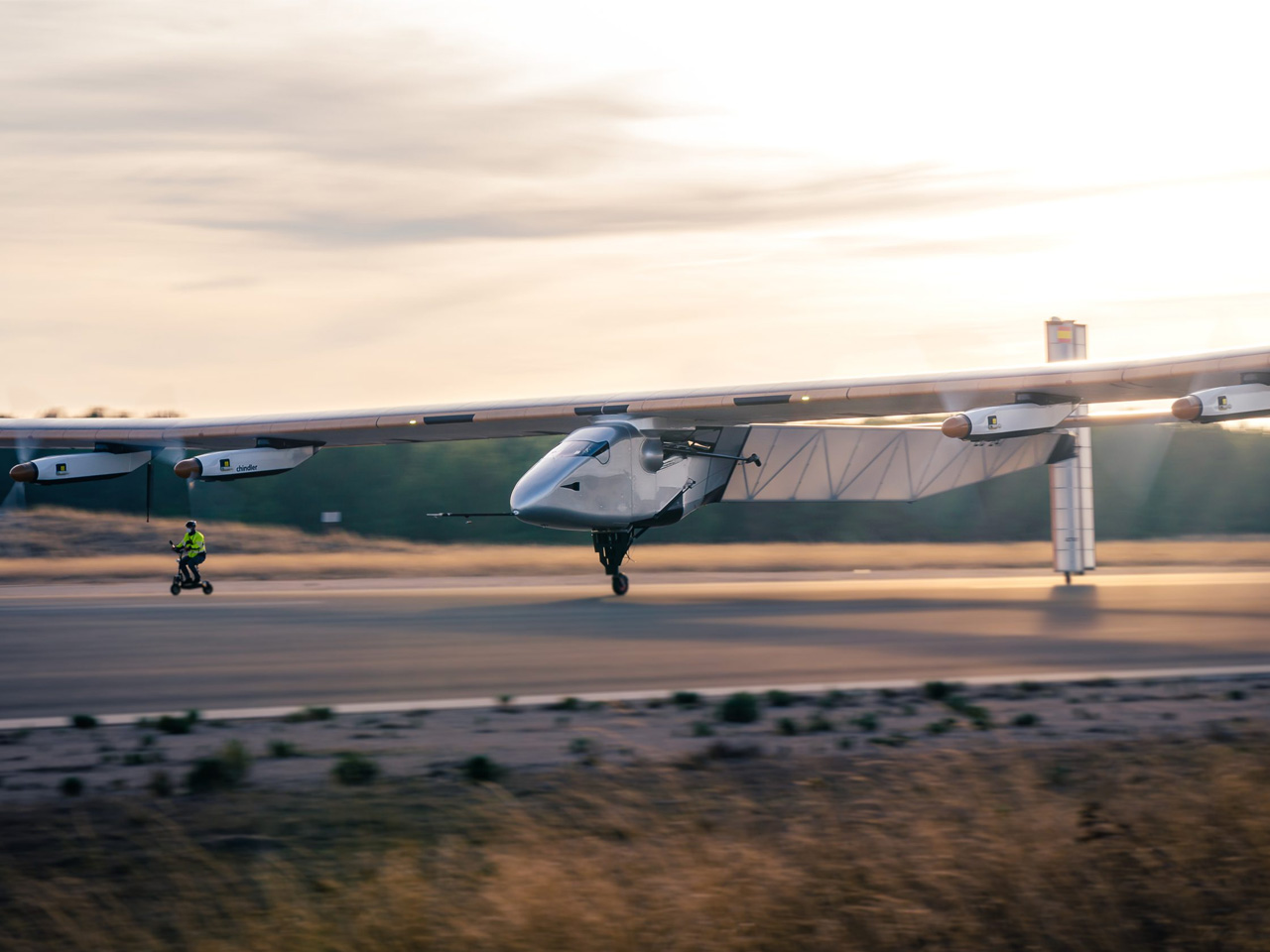Big names like NASA and Boeing have tried and failed in building solar-powered uncrewed aircrafts that can stay airborne for weeks. Their inability is largely attributed to structural challenge called aeroelasticity, where ‘flexible wings can’t handle turbulent air at altitudes between 6,500-32,000 feet.’ Now, a US-based tech company called Skydweller Aero has developed a solar powered drone that can fly for 90 days, unmanned, and hopes to achieve much longer flight times with it in the future.
The Skydweller, as it is called, is a solar-powered drone that can fly for three months straight without landing. It is not yet aligned to revolutionize commercial flights, but being worked upon in partnership with Thales, a French electronics company that specializes in defense systems, it is aimed at maritime surveillance.
Designer: Skydweller Aero
Touted as the largest autonomous, solar-powered drone, the Skydweller on its uncrewed perpetual fight powers itself using solar energy alone. Over 17,000 individual solar cells spread over the 270 square meters of the aircraft’s wing surface, together powering the drone on its long-term surveillance duties. According to the information from Skydweller Aero, the solar cells can generate up to 100kW of power, which is stored in onboard batteries that weigh over 1,400 pounds.
You shouldn’t be mistaken to believe that the Skydweller is a small drone in any sense. By comparison, with a wingspan of about 236 feet, it is longer than that of a Boeing 747’s wingspan by good 25 feet. Even despite that mammoth size, the drone weighs only 400 tones. This is made possible with the use of carbon fiber in its construction. The Skydweller can easily carry up to 800 pounds of payload in its perpetual flight.
As per the available information, the aircraft can maintain its flight during daylight hours using direct solar power and store it in batteries to run the avionics during the nighttime flight. Since the Skydweller is solar-powered in every aspect, it assures a green flight with zero carbon footprint in the altitudes as high as 24,600 and 34,400 feet (during day) and lower altitudes of 4,900 to 9,800 feet (during night). The fall in flying altitude is to minimize power consumption during the dark hours. It is believed that the batteries onboard can sufficiently charge to keep the drone in air for 90 odd days without landing, but as their capacity degrades over time, the maximum airborne times will gradually decrease.
Though, not much can be done about the lifespan of the batteries, Skydweller has been built around ‘safety-qualified, quadruple-redundant flight control system and vehicle management system (VMS),’ which ensure if there are any failed strings in the coding and algorithms onboard, they can autonomously ‘shut down, correct and restructure’ during the course of the flight. “This enables the aircraft to consistently achieve unprecedented flight endurance, while meeting the highest levels of safety, reliability, and effectiveness” Skydweller Aero notes on its website.
The post Skydweller: Largest autonomous, solar-powered drone can fly for three months without landing first appeared on Yanko Design.

